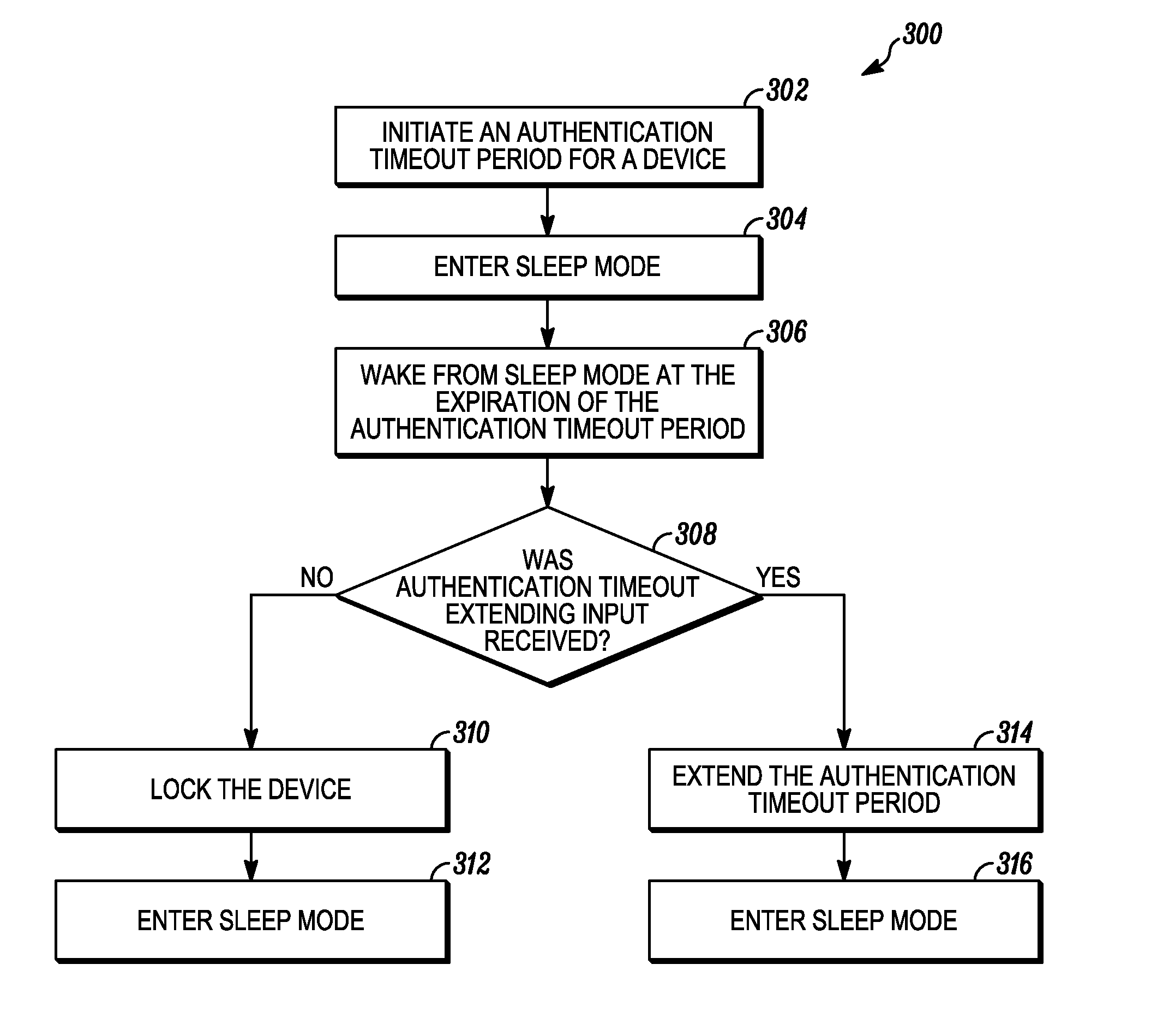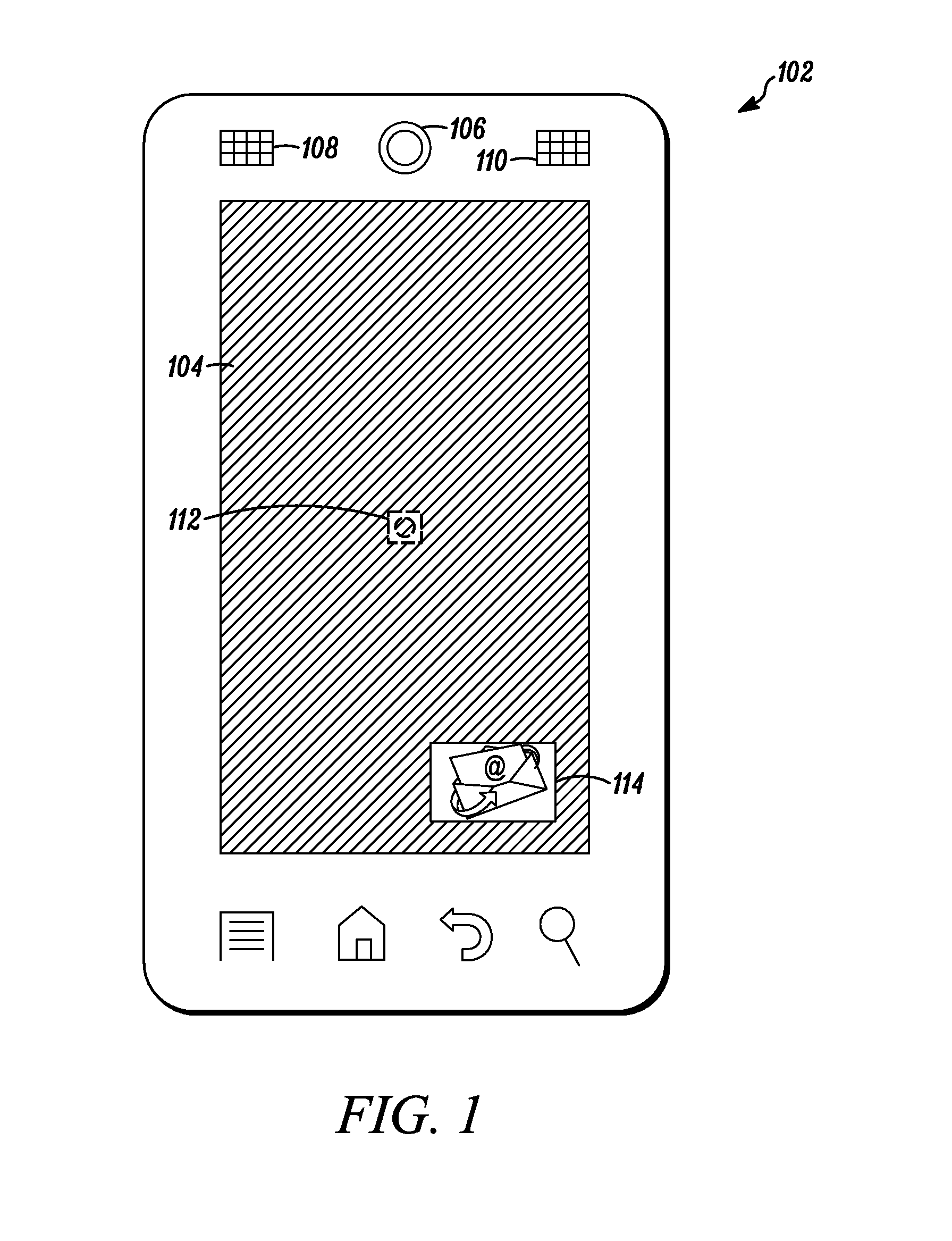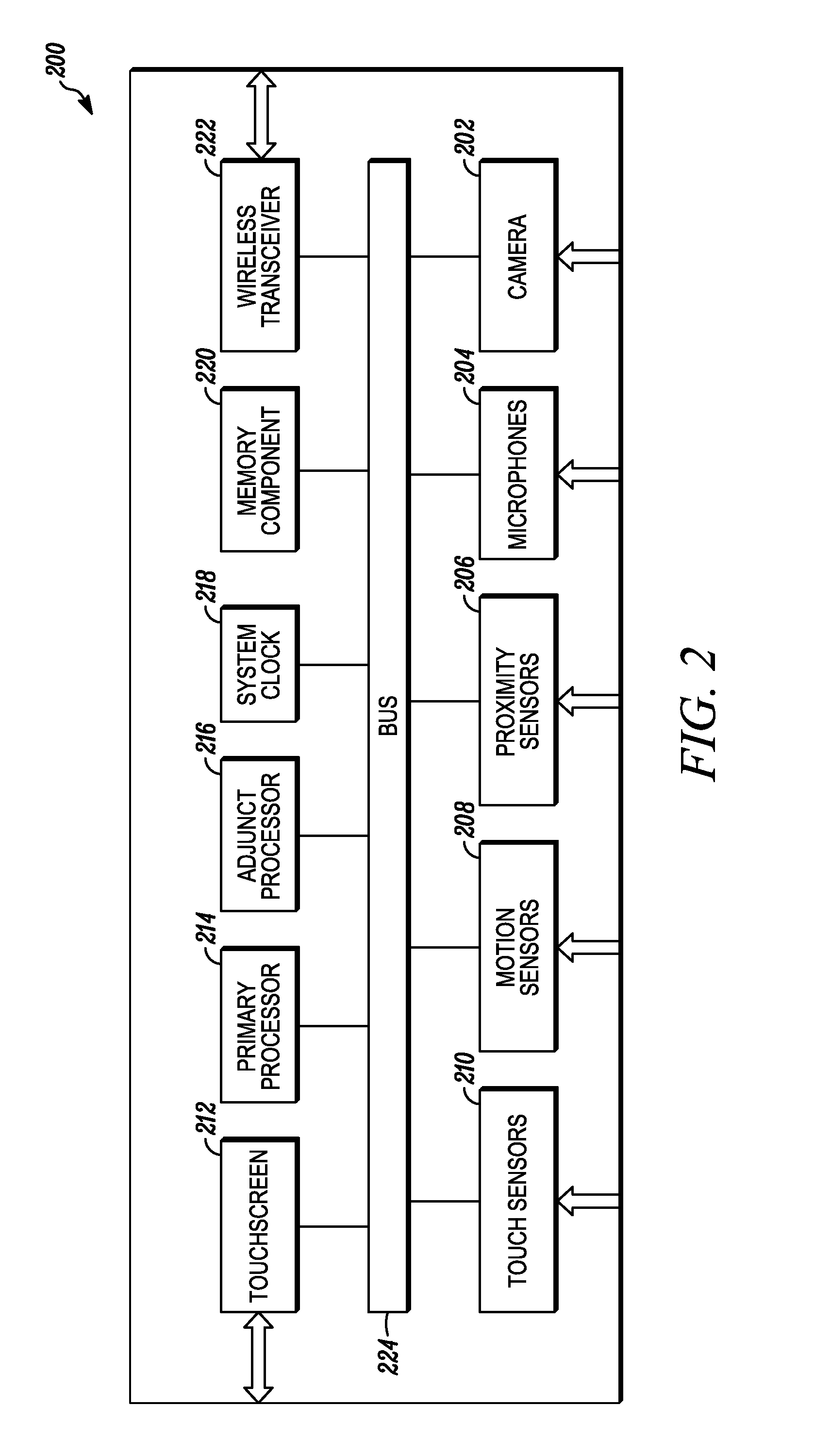Method and Apparatus for Extending an Authentication Timeout Period
a technology of authentication timeout and timeout period, which is applied in the direction of unauthorized memory use protection, high-level techniques, instruments, etc., can solve the problems of limiting the number of times users must provide passwords, pins, swipes, and both the operation and user interaction of the devi
- Summary
- Abstract
- Description
- Claims
- Application Information
AI Technical Summary
Benefits of technology
Problems solved by technology
Method used
Image
Examples
first embodiment
[0039]For a first embodiment, the authentication timeout extending input is generated as a result of a contact to the touchscreen 104 of the electronic device 102 after a notification is displayed on the touchscreen 104. To implement this embodiment, the device 102 includes the touchscreen 104 coupled to the adjunct processor 216, wherein the touchscreen 104 is configured to detect tactile input and responsively provide the authentication timeout extending input to the adjunct processor 216. Contact to the touchscreen 104 may be made with a user's finger or other implement, such as a stylus. When the user sees the breathing e-mail notification icon 114, for example, the user taps on the touchscreen 104 to display more information about the e-mail. In doing so, the touchscreen 104 responsively provides the authentication timeout extending input that the adjunct processor 216 detects.
second embodiment
[0040]For a second embodiment, the authentication timeout extending input is generated as a result of a contact to a housing of the electronic device 102. To implement this embodiment, the device 102 includes the at least one touch sensor 210 coupled to the adjunct processor 216, wherein the at least one touch sensor 210 is configured to detect tactile input and responsively provide the authentication timeout extending input to the adjunct processor 216. The touch sensor 112 located on the backside of the device housing, for example, detects a user's hand cradling the device while the user views or interacts with the touchscreen 104 and provides the authentication timeout extending input to the adjunct processor 216. In additional embodiments, touch sensors 210 are placed at different locations on the device 104, such as along the edges of the device 102 to detect an alternate grip that “pinches” the device 102 between the user's thumb and fingers and, responsively, provide the auth...
third embodiment
[0041]For a third embodiment, the authentication timeout extending input is generated as a result of shaking the electronic device 102. To implement this embodiment, the device 102 includes the at least one motion sensor 208 coupled to the adjunct processor 216, wherein the at least one motion sensor 208 is configured to detect a motion of the device 102 and responsively provide the authentication timeout extending input to the adjunct processor 216. To display the time or solicit more information about a breathing notification while the device 102 is asleep, for instance, a user shakes the device 102 in a way to cause detection by one or more motion sensors 208, which responsively provide the authentication timeout extending input to the adjunct processor 216. To distinguish a user's intentional shaking from environmental vibration, the user might “twist” or “roll” the device 102 back and forth about a pivot point by supinating his forearm. Alternatively, the user can “wave” the de...
PUM
 Login to View More
Login to View More Abstract
Description
Claims
Application Information
 Login to View More
Login to View More - R&D
- Intellectual Property
- Life Sciences
- Materials
- Tech Scout
- Unparalleled Data Quality
- Higher Quality Content
- 60% Fewer Hallucinations
Browse by: Latest US Patents, China's latest patents, Technical Efficacy Thesaurus, Application Domain, Technology Topic, Popular Technical Reports.
© 2025 PatSnap. All rights reserved.Legal|Privacy policy|Modern Slavery Act Transparency Statement|Sitemap|About US| Contact US: help@patsnap.com



